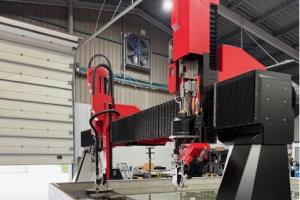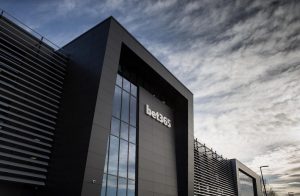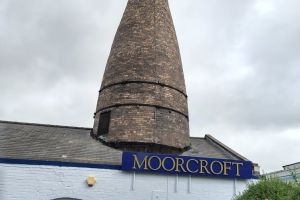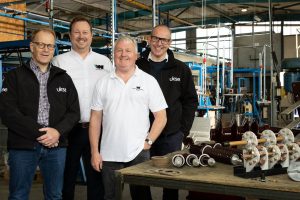University’s robotic dog set to be a tail of success
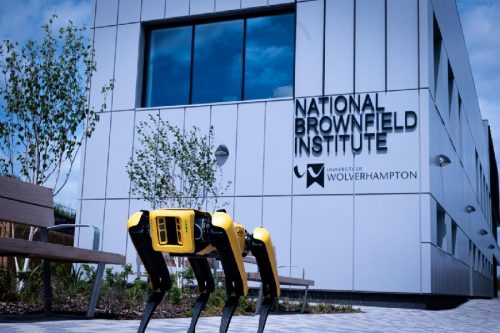
The University of Wolverhampton is taking the lead in digital construction with a robotic dog which has been designed to increase efficiency and reduce safety risks on construction sites.
Spot was designed by Boston Dynamics, and can map its environment, sense and avoid obstacles, climb stairs, and open doors, acting as an autonomous, remote inspection tool in a variety of environments, including power generation facilities, decommissioned nuclear sites, factory floors, construction sites and research laboratories.
The investment in new technology was delivered as part of the government’s Levelling Up funding programme which saw £17.5m invested in a new research centre, the National Brownfield Institute (NBI) at the university’s £120m Springfield Campus – a former brewery and brownfield site which was recently regenerated.
The partnership funding has allowed for investment in robotic technology as well as the latest wearable and hand-held laser scanning devices used for high quality reality capture of buildings and sites, and an immersive visualisation suite, Igloo Vision, providing businesses with access to equipment which stimulates collaboration, simulation and visualisation.
Paul Hampton, head of the school of architecture and built environment at the university, said: “Our overall investment in the construction super-campus at Springfield, including the new School of Architecture and Built Environment, is designed to enable and introduce students to the rapidly emerging world of digital construction.
“Our aim is to use and apply digital tools to improve the process of delivering and operating the built environment. Tools like Spot will ensure that the delivery, operation and renewal of our built environment will be safer, more efficient and more collaborative.
“Using technology like Spot at the NBI will help as a catalyst in utilisation of brownfield sites and provide developers with advice and knowledge in relation to areas such as building scanning, soil analysis, ground water contamination and ground stabilisation to effectively and safely bring those sites back into use.
“It will be a working model for brownfield remediation and new construction techniques that can be implemented regionally and nationally and exported around the world.”

